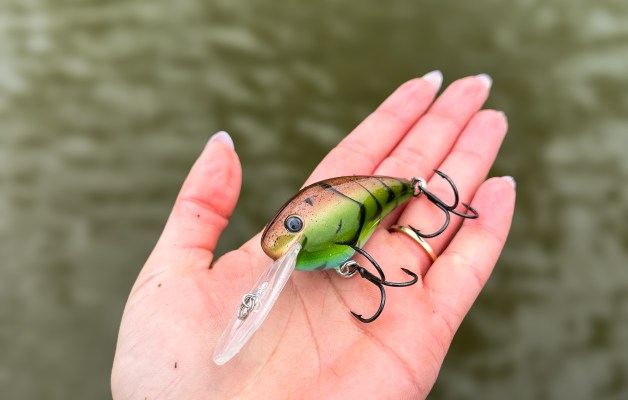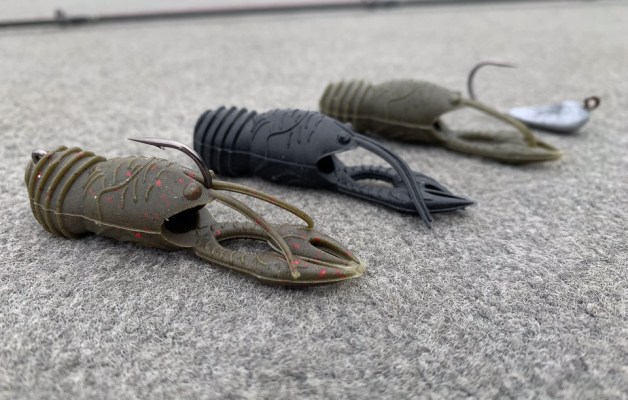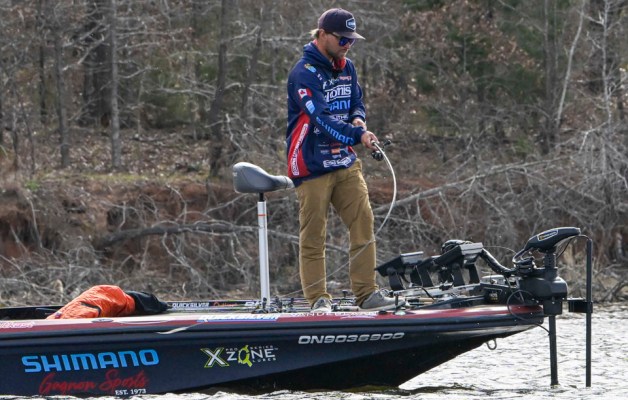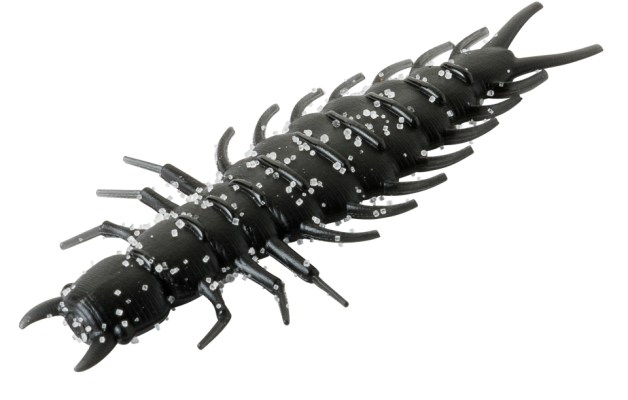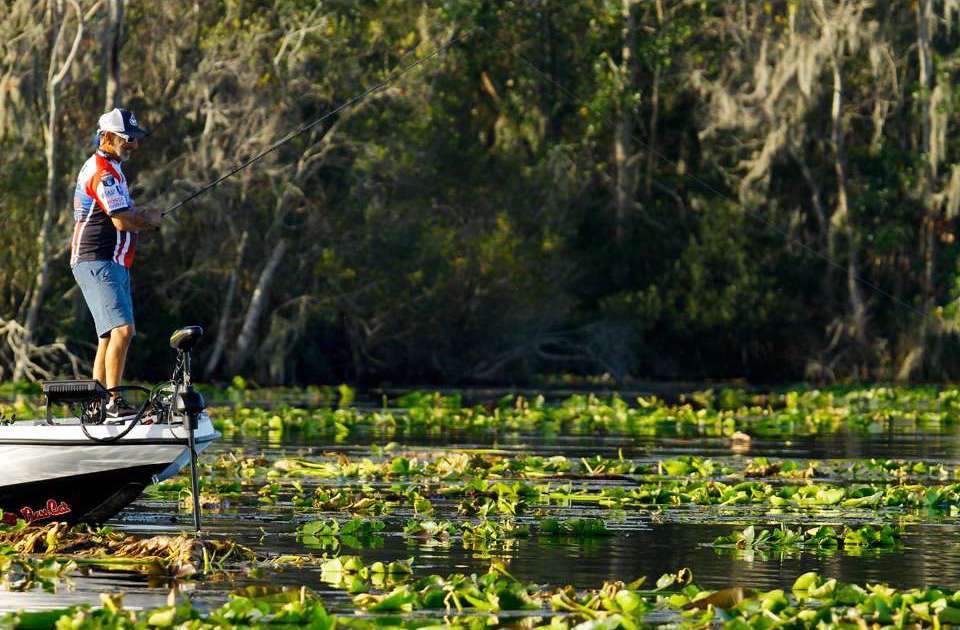
Paul Elias didn’t have a bass boat when he was a teenager, but he did have a hunger to fish.
He caught rides with friends for years, even after he graduated from the University of Southern Mississippi and headed offshore to work in the oil patch. Determined to have a boat of his own, Elias saved money for a full year to put a down payment on his first bass boat – a 15-foot Venture that he outfitted with an 85 horsepower Johnson outboard motor.
The boat had two Lowrance flashers on it that “shook the boat and made all kinds of noise,” Elias recalled. It had a 12-volt trolling motor that offered 28 pounds of thrust.
Completely rigged, the Venture cost Elias $4,700. He paid $2,000 down, financed the rest and remembers the details of the transaction like nobody’s business.
The year was 1974, and B.A.S.S. was only 6 years old. A full 50 years after the organization was founded, things have changed even more.
“That boat wasn’t much at all by today’s standards, but I fished in it for three years,” Elias said.
Fast forward a decade and Elias, who already had the 1982 Bassmaster Classic championship to his credit, walked into a boat show. There was a brand new Ranger bass boat sitting on the showroom floor. Tricked out, the craft had a $20,000 price tag.
“I remember saying to the guy I was with ‘They’ll never sell a bass boat for 20 thousand dollars,’” Elias said.
Anyone involved with modern-day bass fishing knows Elias’ prediction was dead wrong.
The BassCat he fishes from today sells for more than $80,000, and the four Garmin Fish Finders on board total another $15,000. Throw in his Power Poles and his trolling motor, not to mention all the gear he can carry below deck, and Elias’ BassCat is a floating, six-figure investment.
The price tag on today’s bass boat certainly is higher, but with it comes safety, comfort and specialization never before seen in competitive bass fishing. The 250 horsepower engine seen throughout the Bassmaster Elite Series and Open tournaments can propel anglers and all their gear at speeds greater than 70 miles per hour, while longer hulls (21-22 feet is standard) provide more stability in open water. Kill switches and better running lights are simple additions that have saved lives.
Today’s rides certainly are more comfortable, as well, said Shaw Grigsby, another decades-long pro.
“We used to wear rain suits when we took off in the old boats,” Grigsby said. “The boats now just handle the water the better. They’re designed to have all the comforts you could want – rod holders, the storage below deck for gear. My Triton has heated seats, for crying out loud.”
Perhaps more than anything, technology has changed the bass fishing game and the transportation that makes it possible. Fish Finders are light years ahead of where they were when older pros like Elias began his career. And while they may not put bass in the boat, today’s electronics certainly make them easier to find.
“I read somewhere that there’s more sonar equipment on today’s bass boat than there was on a World War II battleship,” said Jeff Stone, Senior Vice President of Skeeter Boats – a company that traces its roots back to the 1920s.
“It’s true,” Stone continued. “And that puts into perspective how far we’ve come. You can’t compare where we were even in the 1980s to today. And you certainly can’t compare today’s boats to the ones from the first B.A.S.S. tournaments.”
Stone age to space age
Long before Bill Dance brought his orange and white University of Tennessee ball cap to televisions across America, he was a competitor in the first B.A.S.S. tournament ever held – a rally on Arkansas’ Beaver Lake in 1967.
Dance borrowed a 60-horsepower engine to outrun the competition to start the event. He caught the first bass in the history of B.A.S.S. that day, and as the story goes, some anglers were still at the launch when he made that historic cast.
Tournaments in those days began with a “shotgun start,” meaning everyone launched at the same time, as opposed to today’s flighted events. It’s not clear why the field was still close to shore that morning when Dance was already catching bass, but there are any number of reasons.
“The components back then were terrible,” said long-time B.A.S.S. pro Gary Klein. “For years, no matter what brand of boat you were in or what motor you had, there was no guarantee you’d get to fish all day. There have been all kinds of changes in boats since I stared fishing as a sophomore in high school in 1973, but the reliability of the boats is the biggest thing. You’re not breaking down and you’re not busting up your boat unless you’re trying.
“Today’s boats are meant to be used for bass fishing,” he added. “When you buy a car, it has an engine in it. You have some boat/motor packaging today like Skeeter/Yamaha and Triton/Mercury, but in the 70s and 80s, that wasn’t the case. And if you put the wrong motor on your boat, you had problems.”
Perhaps ironically, Klein’s first boat had fewer horses on the back (a 50-HP Mercury) than the 60-horse unit Dance used in 1967. The entire set-up cost a fraction of what today’s boats do, but Klein said anglers are the ones who have benefitted from the advancements.
“When I cross five states or more to go fishing, my equipment is not an issue,” Klein said. “Knowing everything is going to work lets me focus and do my job. It lets me enjoy my sport more.”
Grigsby agreed, and said added safety features are much more advanced than when he began fishing competitively. He recalled, in particular, past tournaments on the Potomac and Santee rivers that scared him.
“There were 50 mile per hour winds and I really didn’t know if we were going to make it back,” he said. “That one on the Santee, I was fishing with Frank Scalish. It was his first tournament. There were times in the waves when you couldn’t see anything around you but water. Frank was in his awe and wanted to take pictures. I just told him to keep his eyes behind us so no ran on top of us.
“I didn’t tell Frank, but I thought we were going to die then and there!,” Grigsby said.
Steve Bowman, the director of web content for JM Associates, has covered professional bass fishing for 30-plus years. He said rough water made broken tackle boxes and busted noses commonplace, and added that his back “still hurts” from a tournament he worked on Lake Erie in the ‘80s.
“These boats are not just faster and safer for one event,” Bowman said. “They’re better for your long-term health. We couldn’t have Marshals in these tournaments today with the way boats used to be. No one would volunteer to do it.”
Uniformity rules
When the first Bassmaster Classic was held on Nevada’s Lake Mead in 1971, B.A.S.S. officials attempted to level the field by making anglers fish from identical Rebel Fastback bass boats.
A Bassmaster Magazine photo caption from that year tells the story: “The $4,000 Classic Model was powered by a 90 (horsepower inboard/outboard,) rigged with a Lowrance model LFG-300 Locator-Sounder, a Super Motor-Guide foot controlled electric motor and Worth Anchor-Mate.
“Everything was standardized, but the individual tackle and ‘know-how,” the magazine explained.
B.A.S.S. provided boats to anglers in every Classic until 2008, but an event just as important in the evolution of the sport (and the vessels that make it possible) took place in 1997. That’s when B.A.S.S. decided to raise the maximum horsepower on a boat motor from 150 to 250. The move was made to attract anglers from western states to the tour, which long had been almost entirely populated with anglers from the southeastern U.S.
And as Bassmaster Magazine Editor-in-Chief Dave Precht pointed out in the April edition, there were some who felt the high end should have stayed at 150 horses.
Precht wasn’t one of the naysayers.
“If increasing horsepower was the price for bringing Western anglers into the fold, I say it was worth it,” Precht wrote.
“It was for safety reasons, having it at 150 horsepower,” Precht said in a later interview. “Just like NASCAR has restrictor plates, we didn’t want some guy out there doing anything crazy.”
Anglers and manufacturers interviewed for this story said quite the contrary has happened; adding that boats are safer now with more powerful motors.
“In the 80s, (the sport) WAS about going fast,” said Skeeter’s Stone. “The industry is more mature now, I think. We are protective of the habitat and the places we fish. We have catch and release programs that protect the fishery. [Manufacturers and anglers have] taken great strides collectively.”
Stone said those changes are among the most fundamental he’s seen during his 30 years in the boat-building business. Leaders from all divisions of his team meet weekly to discuss products and concepts, and they give safety and performance equal weight.
“I’m hands on [as vice president] and I think every company in this business is like that,” Stone said. “You have to be.”
Gary Clouse, the founder of Phoenix Boats, certainly is.
A longtime professional angler, Clouse owned a bass boat before he had an automobile, and he’s been around long enough to remember when an “85 horsepower engine was huge.”
“When I was 14 years old, the boat I wanted was a TR-10 Ranger,” Clouse said. “That was THE boat to have because they were using it in the Bassmaster tournaments. The first boats were fiberglass with wooden transoms, and you didn’t have a casting deck, so you were sort of tucked away in there…But those days are over. Now, you have high quality fiberglass cloth and resins. The hull design is better. There’s craftsmanship better than ever before.”
Where to now?
Forrest Lee Wood and his wife Nina used heavy, wooden boats when they ran a successful guiding service on the White River and Bull Shoals Lake in northern Arkansas in the 1950s and 1960s.
Forrest eventually taught himself how to work with fiberglass, and Ranger Boats was born.
The fledgling company, with its home base in the appropriately-named Flippin, Arkansas, manufactured six bass boats in 1968. The number grew to 600 boats in 1969. A year later, Ranger produced 1,200 boats.
Then on May 4, 1971, Ranger’s boat plant burned to the ground.
The business was devastated, but Wood was unflappable in his resolve to get his company back up and running.
“We rebuilt the building with the same boat-building crew in 40 days,” he recalled. “And then we got back at it.”
Wood’s designs, which he scribbled onto napkins and scrap paper every chance he got, revolutionized the bass boat industry at just the right time. Ray Scott founded the Bass Anglers Sportsmen Society in 1967 and demand for quality boats grew almost exponentially.
Ranger almost never happened, however — Wood was going to use his new fiberglassing skills to build, believe it or not, phone booths.
“I taught myself how to work with fiberglass in my backyard,” Wood said. “I was looking to build a better boat, but I was just trying to make a living.
“There isn’t a telephone booth to be found in America anymore,” he continued. “But there are a whole lot of people who want a bass boat. I think we made the right choice.”
Wood, now 85, is among the many people who believe technology will continue to spark the industry.
“Things will keep pushing forward,” he said. “There are some really smart people in this field.”
Today’s visionaries, guys like Clouse and Stone, no doubt will help lead the way. Stone sees improvements to systems integration and the diagnostic capabilities of boat dealers in the near future. Clouse said design tweaks and increased efficiency are on the horizon.
And as Klein said, bass anglers (from weekend warriors to Elites,) will benefit from the ingenuity.
“There have been so any changes to bass boats through the years, and every one of them has been good,” Klein said. “I can’t wait to see what comes next.”

